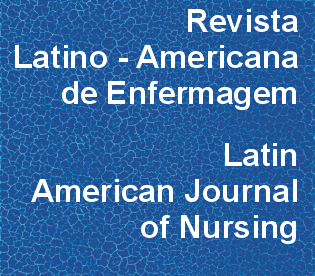Adesão farmacológica ao anticoagulante oral e os fatores que influenciam na estabilidade do índice de normatização internacional
DOI:
https://doi.org/10.1590/S0104-11692011000100004Palavras-chave:
Anticoagulantes, Coeficiente Internacional Normatizado, Monitorização AmbulatorialResumo
Este é um estudo transversal, desenvolvido com o objetivo de relacionar a estabilidade do índice de normatização internacional (INR), utilizado como parâmetro para monitorar os níveis de coagulação do sangue, com adesão, idade, escolaridade, nível socioeconômico, interação com outras medicações, comorbidades, ingesta de vitamina K, tempo de anticoagulação (ACO) e custo com medicações. Incluíram-se 156 pacientes, idade média 57±13 anos, 53,8% pertencente ao sexo masculino; 61 (39,1%) tiveram alta adesão, 91 (58,3%) média e 4 (2,6%) baixa adesão ao tratamento; 117 (75%) apresentaram estabilidade do INR de até 50% e 39 (25%) >; a 75%; pacientes com menor tempo de ACO apresentaram maior estabilidade; aqueles que gastavam menos com a medicação permaneciam mais estáveis e com melhor adesão. Concluiu-se que mais de 90% dos pacientes apresentaram alta e média adesão referida, e que tempo de anticoagulação e custo com a medicação foram os fatores relacionados à estabilidade da ACO.Downloads
Os dados de download ainda não estão disponíveis.
Downloads
Publicado
2011-02-01
Edição
Seção
Artigos Originais
Licença
Os direitos autorais são de propriedade exclusiva da revista, transferidos por meio da Declaração de Transferência de Direitos Autorais (presente no Formulário Individual de Declarações) assinada pelos autores. Para a utilização dos artigos, a RLAE adota a Licença Creative Commons, CC BY-NC Atribuição não comercial (resumo ou código completo da licença). Com essa licença é permitido acessar, baixar (download), copiar, imprimir, compartilhar, reutilizar e distribuir os artigos, desde que para uso não comercial e com a citação da fonte, conferindo os devidos créditos autorais a Revista Latino-Americana de Enfermagem. Nesses casos, nenhuma permissão é necessária por parte dos autores ou dos editores.Como Citar
Ávila, C. W., Aliti, G. B., Feijó, M. K. F., & Rabelo, E. R. (2011). Adesão farmacológica ao anticoagulante oral e os fatores que influenciam na estabilidade do índice de normatização internacional . Revista Latino-Americana De Enfermagem, 19(1), 18-25. https://doi.org/10.1590/S0104-11692011000100004



